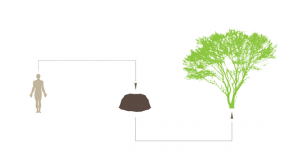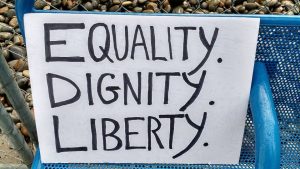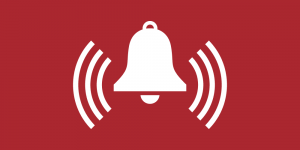 The only thing that is truly certain in this life is that all of us will die. We don’t know when or how, but we do know that ultimately we cannot avoid death. Impermanence and death are inevitable, universal, and unavoidable parts of life.
The only thing that is truly certain in this life is that all of us will die. We don’t know when or how, but we do know that ultimately we cannot avoid death. Impermanence and death are inevitable, universal, and unavoidable parts of life.
Rather than live in denial or in fear of that fact (as so many people do), we should strive to face it and prepare for it to the extent that we can. That way, we can have a role in trying to ensure that our end of life experience and our post-death legacy are in keeping with our values and that our loved ones know what we want and won’t have to muddle through all of our death care decisions and post-death details and arrangements without any of our guidance when they are in the process of grieving.
Each of us has an impact on our environment not just during our life, but after our death. Conventional modern burials and cremation both have significant negative impacts on the environment. Death is natural, but the ways our modern society usually processes dead bodies is far from natural (or benign). Embalming fluid is a toxic mix of formaldehyde, benzene (both of which are carcinogens), and methanol. (Some shocking stats: Embalmers have a 13% higher death rate, 8 times higher risk of leukemia, and 3 times higher risk of ALS than the general population. Sources: See link at the end of this paragraph.) Caskets and vaults use vast quantities of natural resources, such as wood (including tropical hardwoods), steel, copper, bronze, and/or concrete, and can leach iron, lead, zinc, and cobalt into the soil. Meanwhile, cremation uses a lot of energy (burning fossil fuels) to reach a temperature of 1900 degrees F for more than 2 hours, which produces considerable CO2 emissions. Cremation also releases mercury—a dangerous neurotoxin—into the air (due to the incineration of people’s silver dental fillings), as well as other by-product air pollutants (e.g., dioxins, nitrogen oxide, and particulates). For additional impacts and statistics, click here.
 Fortunately, alternatives to conventional burial and cremation are now available in many areas, as the interest in natural burial is growing. Increasingly, people are opting to be buried without being embalmed (or else being embalmed using non-toxic, biodegradable fluids, or temporarily preserved using dry ice); wrapped in a shroud or placed in a biodegradable casket or container; and buried in a natural setting (rather than in the typical mowed and manicured lawn cemetery that uses toxic herbicides, fertilizers, and pesticides), where their body and its nutrients can decompose into the earth (dust to dust), allowing them to contribute to new life. An added bonus is that natural burial options are often considerably less expensive than conventional casket (or vault) burials.
Fortunately, alternatives to conventional burial and cremation are now available in many areas, as the interest in natural burial is growing. Increasingly, people are opting to be buried without being embalmed (or else being embalmed using non-toxic, biodegradable fluids, or temporarily preserved using dry ice); wrapped in a shroud or placed in a biodegradable casket or container; and buried in a natural setting (rather than in the typical mowed and manicured lawn cemetery that uses toxic herbicides, fertilizers, and pesticides), where their body and its nutrients can decompose into the earth (dust to dust), allowing them to contribute to new life. An added bonus is that natural burial options are often considerably less expensive than conventional casket (or vault) burials.
The Green Burial Council certifies funeral products, services (funeral homes), and cemeteries and burial grounds that meet their criteria. While definitions of “green” can vary, these are their general criteria: “The Green Burial Council believes cemeteries, preserves, and burial grounds can broadly be considered green if they meet the following criteria: caring for the dead with minimal environmental impact that aids in the conservation of natural resources, reduction of carbon emissions, protection of worker health, and the restoration and/or preservation of habitat. Green burial necessitates the use of non-toxic and biodegradable materials, such as caskets, shrouds, and urns. Hybrid, natural, and conservation cemeteries choosing to follow these basic guidelines fall under the general category of green cemeteries, as opposed to conventional lawn cemeteries that require concrete, plastic or other vaults or liners, and allow embalmed bodies and exotic wood or metal caskets.”
 For specific details on their certification criteria for burial products, services, and venues, check out the Green Burial Council’s Standards.
For specific details on their certification criteria for burial products, services, and venues, check out the Green Burial Council’s Standards.
You can find a list of certified providers and products on the Green Burial Council’s website. You can also find providers listed at AGreenerFuneral.org.
Other innovative green burial options are emerging, including human composting (accelerated decomposition/recomposition: to convert human remains into soil, e.g., Recompose; see the Smithsonian article link below), using mushroom mycelium to help digest and neutralize toxins in our bodies during decomposition, to prevent them from leaching toxins into the ground (e.g., the Infinity Burial Suit), and an egg-shaped biodegradable burial pod (Capsula Mundi). UPDATE: Another newish option is aquamation (AKA water cremation, or alkaline hydrolysis), which is currently approved in more than 20 states, as of early 2022 (and other states will eventually approve it, as well). Aquamation is the option that Bishop Desmond Tutu chose for himself.
Green burial resources:
- Green Burial Council
- AGreenerFuneral.org
- Natural Burial Association (Canada)
- Natural End / Natural Burial Company (U.S./U.K.)
- Natural Transitions
- Better Place Forests (cremated ashes spread under a selected tree; family plots can include pets)
- “Washington becomes first state to allow ‘human composting’ as a burial method,” by Meilan Solly, Smithsonian Magazine
- “I dug a green grave and learned the truth about the dirty death industry,” by Brian Kahn, Gizmodo
- Film: A Will for the Woods
- Info on finding organically grown flowers
- For additional articles, books, and videos on green burial, see: https://www.greenburialcouncil.org/books_blogs_articles_videos.html
And these are other useful resources on related issues of death, death care, and end-of-life planning:
- Compassion and Choices (expanding end of life options, e.g., death with dignity)
- Info on advance health care directives
- Advance Directive for Dementia
- You Are Going to Die (events, social media, etc.)
- Order of the Good Death
- Death Salons
- Death Cafes
- SevenPonds.com: Embracing the end-of-life experience
- “What’s a death midwife? Inside the alternative death care movement,” by Jennifer Luxton, YES Magazine
- Being Mortal: Medicine and What Matters in the End, by Atul Gawande
- The Gentle Art of Swedish Death Cleaning: How to Free Yourself and Your Family from a Lifetime of Clutter, by Margareta Magnusson
- Note: There are various books, workbooks, and worksheets out there to help people get their affairs in order and organize important and useful information for their loved ones about their wishes, records, arrangements, etc. One helpful product (which includes forms to fill out and file folders) is the NOK Box: Organizing for Your Next of Kin. (For others, do a web search for “getting affairs in order,” end of life planning, or: Peace of Mind Planner, A Graceful Farewell, Get It Together, What If Workbook; I’m Dead, Now What?)
When writing up your will or talking with your loved ones about your wishes, be sure to also identify some of your close friends or family members who might be able and willing to take your pets or other animals in the event of your death.



 I recommend giving some real thought to your own values and priorities (and desired legacy), and sharing your own mini-manifesto or values/mission statement with others.
I recommend giving some real thought to your own values and priorities (and desired legacy), and sharing your own mini-manifesto or values/mission statement with others.











 Here’s something that most of us should be doing right now (everyone really, but especially those of us who are in areas that are at risk of flooding, hurricanes, fires, earthquakes and/or tsunamis, severe winter weather, or extended power outages): Assemble your emergency supplies, and make evacuation/safety plans (including meeting spots, out-of-area contacts, etc.). You should have emergency supply kits (AKA “go bags”/backpacks) stashed in your home (preferably near an outside door) or in a shed, garage, or another out-building, as well as in at least one of your family’s cars, and ideally also at your place of work. Workplaces and schools should also have emergency supplies and evacuation plans in place.
Here’s something that most of us should be doing right now (everyone really, but especially those of us who are in areas that are at risk of flooding, hurricanes, fires, earthquakes and/or tsunamis, severe winter weather, or extended power outages): Assemble your emergency supplies, and make evacuation/safety plans (including meeting spots, out-of-area contacts, etc.). You should have emergency supply kits (AKA “go bags”/backpacks) stashed in your home (preferably near an outside door) or in a shed, garage, or another out-building, as well as in at least one of your family’s cars, and ideally also at your place of work. Workplaces and schools should also have emergency supplies and evacuation plans in place.
